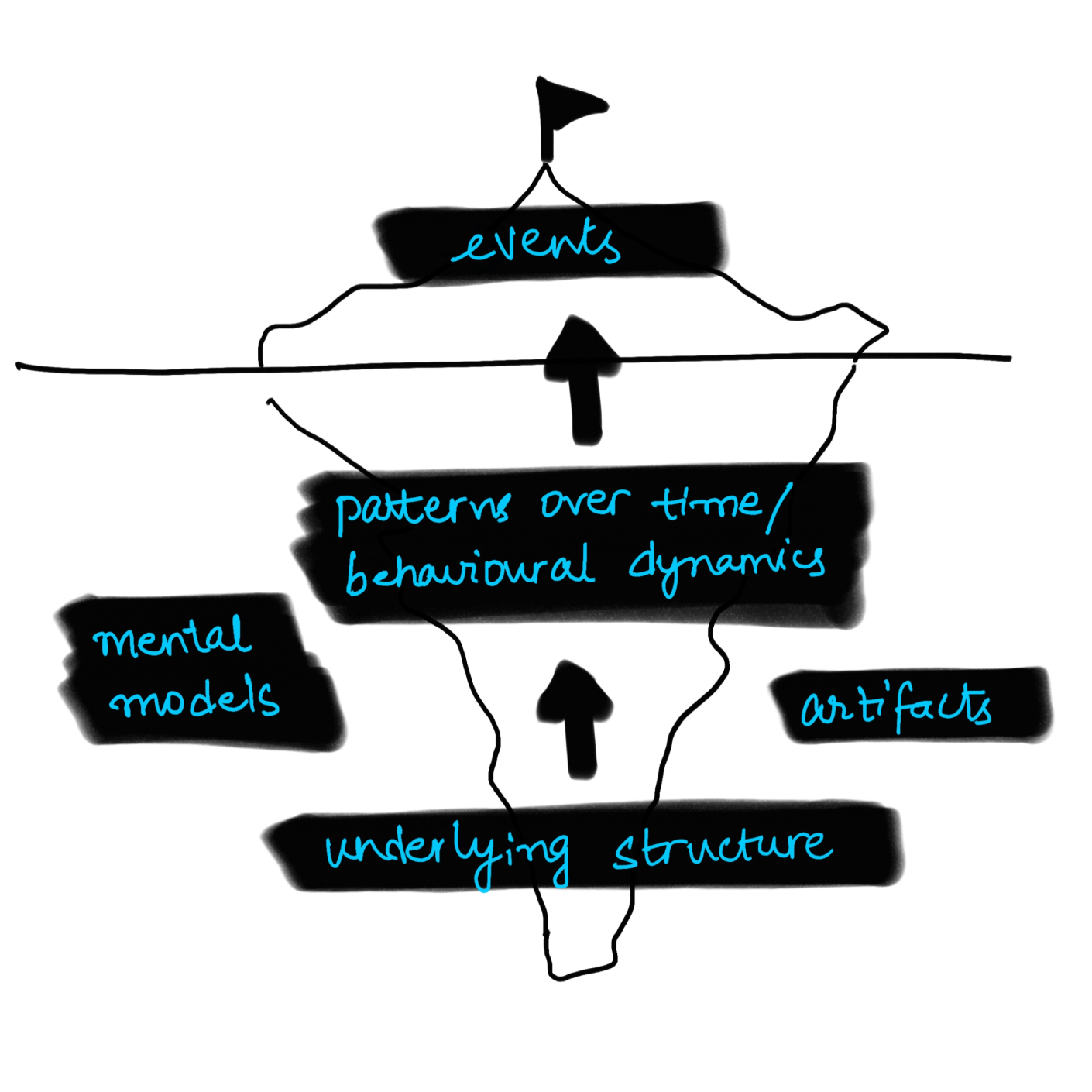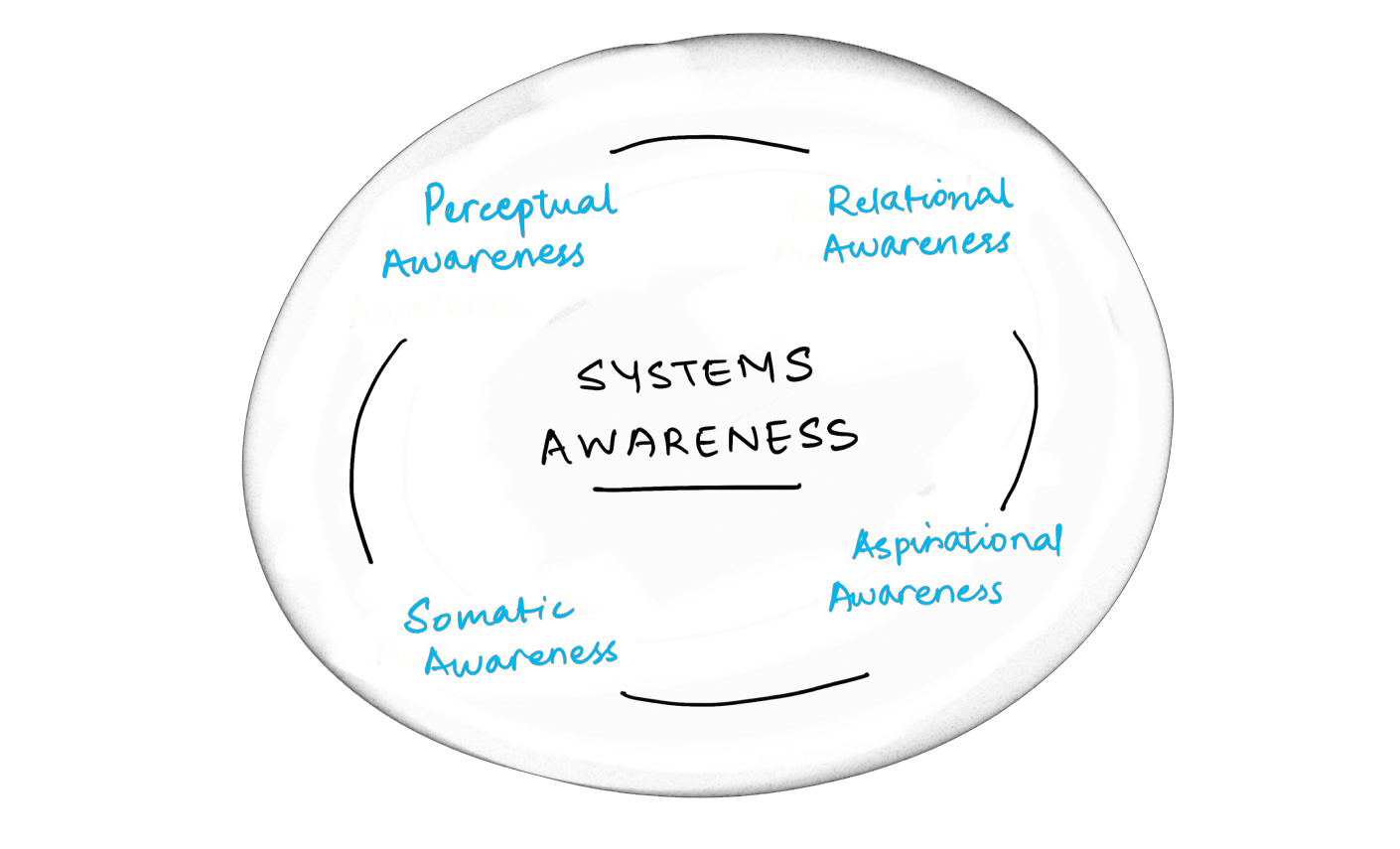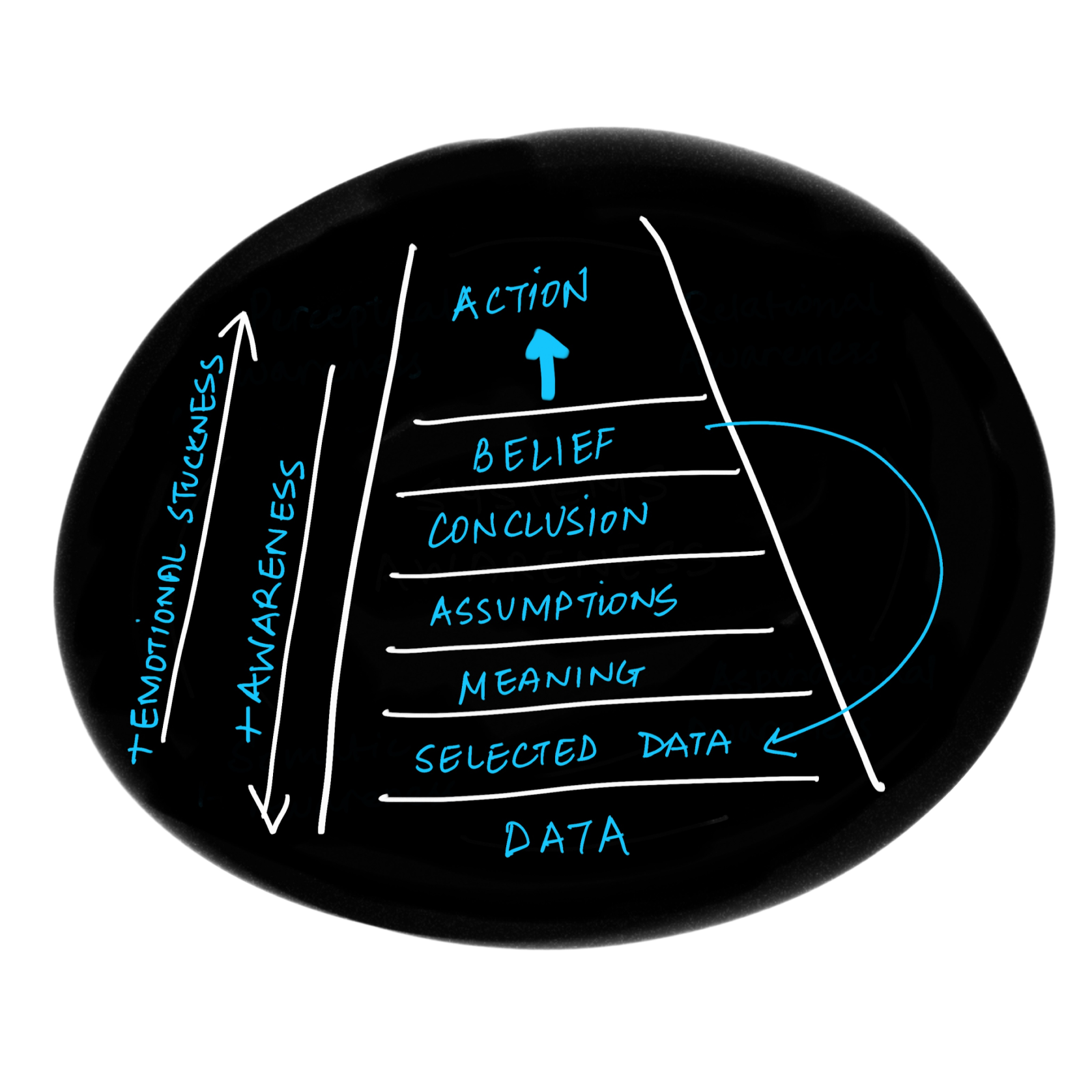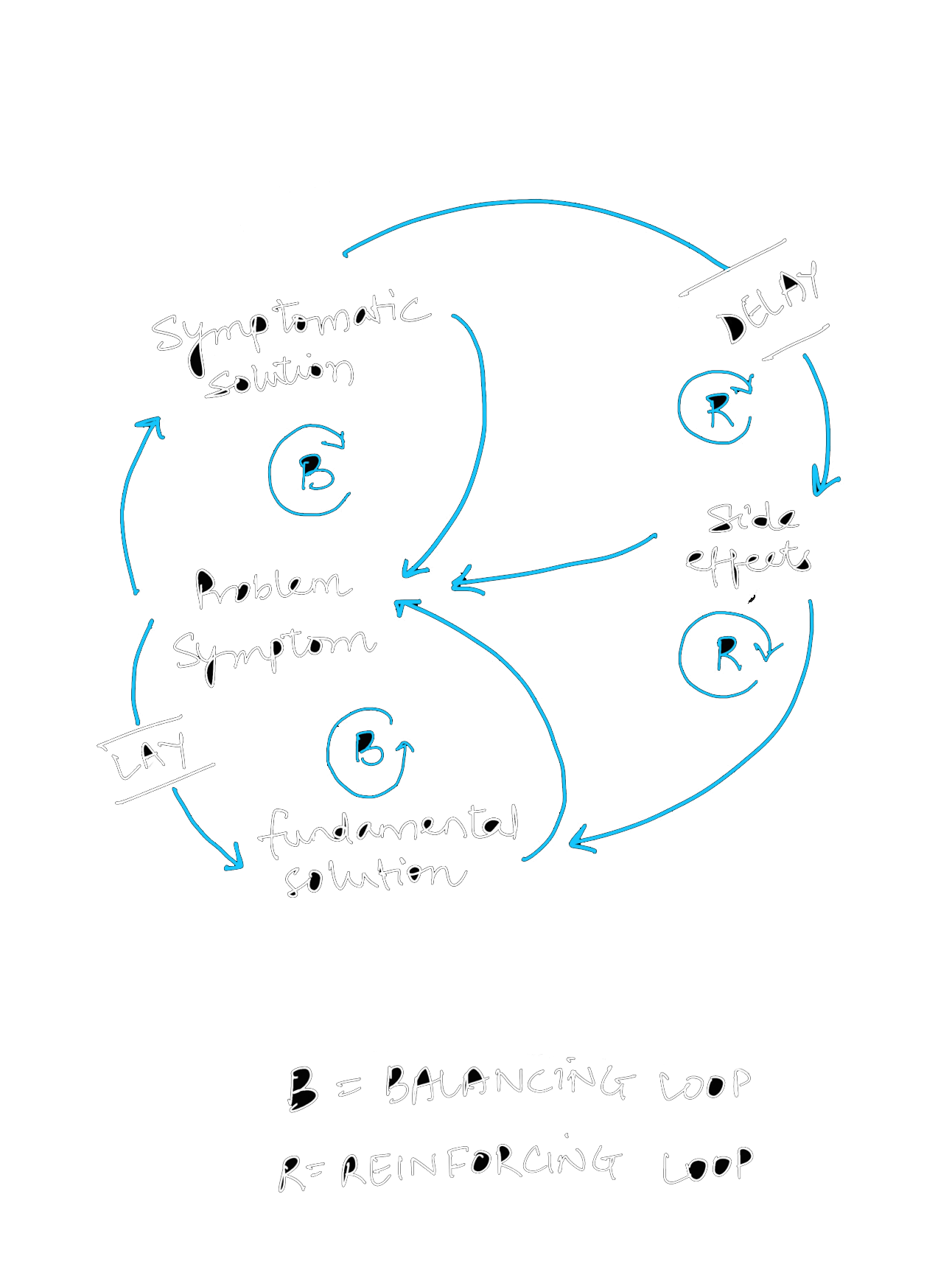As leaders, we need to guide our teams in navigating complexity. This means teaching them to reflect, deeply understand, and respond to systemic challenges in their lives and communities with mindfulness and compassion.
Systems Awareness Iceberg
This is a systems thinking and systems sensing tool that helps us appreciate the co-existence of the thinking/cognitive parts of a system as well
as the feelings/emotions within the system.
Often, we only see and hear the “events” at the tip of the iceberg, however, the underlying causes for those observable behaviours are hidden “beneath the surface”. More than external factors, systems normally cause their own problems.
The 3-Legged Stool
“Lead” means to step across the threshold.
In our Core Leadership Capacities model, sometimes also referred to as the "Three Legged Stool", we hold that there are three broad areas of developmental work to build capacities to be an effective system leader.
An exemplar leader would have competencies in all three “legs” of the stool.
Generative Social Fields
The Social Field is the innate structure of relationships among individuals, groups and systems that give rise to collective behaviours and outcomes.
All of us participate in co-creating the complex social contexts we in and engage with. A generative field is one in which everyone feels like they can can be seen, heard and therefore learn and thrive.
Science of Well-Being
The Healthy Minds Framework was developed by the Healthy Minds Innovations team, which is affiliated with the Center for Healthy Minds at the University of Wisconsin-Madison. Dr. Richard Davidson is the founder and director of the Center for Healthy Minds and a key contributor to the development of the framework. It consists of 4 pillars: Awareness, Connection, Insight, and Purpose.
-

Awareness
Being attuned to one's environment and internal cues, such as bodily sensations, thoughts, and emotions, with mindfulness, attention, and self-awareness as the key skills to develop.
-

Connection
Fostering care and kinship towards others, promoting supportive relationships and interactions, and developing skills such as appreciation, kindness, and compassion help build connection
-

Insight
Self-knowledge and understanding how one's emotions, thoughts, and beliefs shape experiences and sense of self. The key skills here are self-inquiry, self-knowledge, and self-transcendence
-

Purpose
Having clarity about one's core values and deeper motivation and being able to apply them in one's daily life. The key skills here are clarifying and embodying purpose, values, and meaning.
System Awareness Mandala
-
Perceptual Awareness
Perceptual awareness refers to our ability to be aware of the world around us through our senses, and it involves our cognitive capacity for processing information. The practice of mindfulness falls within this pillar.
-
Relational Awareness
Relational awareness shapes our connections, critical thinking, and decision-making. It includes self-compassion, kindness towards others, and our outlook on life, fostering empathy and meaningful relationships.
-
Somatic Awareness
Somatic awareness encompasses recognizing our physical and emotional needs, fostering inner landscape literacy. It also involves sensing the social field, deepening our understanding of ourselves and the world around us.
-
Aspirational Awareness
Aspirational awareness revolves around finding purpose and direction in life, encompassing a profound sense of meaning, purpose, and the pursuit of big picture goals that drive us to grow and thrive.
Ladder of Inference
It helps us imagine climbing up a ladder in our minds, helping us to recognise how rapidly we leap to conclusions with no intermediate thought process and also helps us recognise our patterns of behavior. When we “climb the ladder”, we tend to become a fierce advocate and have a tendency toward greater “emotional stuckness”. When down the ladder, usually by using inquiry to discover the truth, there usually comes a stronger sense of emotional awareness.
Ladder of Connectedness
The Ladder of Connectedness model shows various levels of connection and awareness we can have in our relationships with others and the world.
At the bottom is agape - unconditional love and connectedness to all things. Neutral present awareness is being fully present without judgment, and bias and disconnection is at the top.
Moving up the ladder decreases our capacity for connection and awareness, leading to less understanding of interdependence and interconnectedness
Shifting the Burden
A systems archetype that usually starts off with a problem symptom. The solutions are obvious and immediate and relieve the problem symptom quickly. But a “quick fix” can divert attention away from the fundamental source of the problem which becomes weaker as less attention is paid to it. In a quick fix loop, emotional tension is the driver while in the fundamental solution loop, creative tension is the driver. In using the Shifting the Burden model, we’re working toward addressing fundamental solutions because they’re often more sustainable and effective.
Creative Tension
A central practice of personal mastery involves learning to keep both a vision and the current reality. Doing this will generate a force within ourselves called “creative tension”. Adapted from Robert Fritz’s work on tension seeking resolution, this is a tool to consider how we might find the sweet spot and stay with our emotions within that tension, without succumbing to them. The real question is what does it mean in terms of my own development, in my own ability to try to move reliably towards my vision that really matters to me.
Mandala for Systems Change
There are four basic domains that are held within the whole and all equally important to creating systems change. The Mandala is a model for holding the whole. This is the whole of the change process.
It’s helpful to recognize that at times we may experience feelings of polarization between some of the elements, in particular Capacity Building and Community Building and between Research and Practice.











